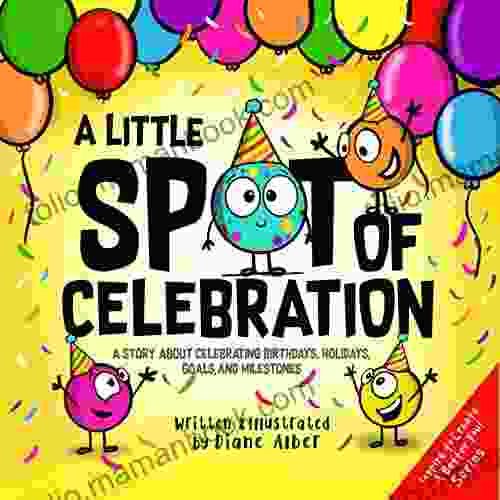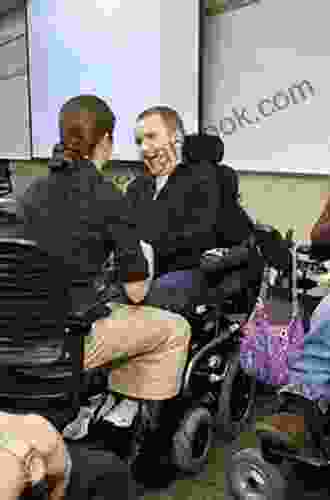Creating Success for Children with Learning Differences: A Comprehensive Guide

4.7 out of 5
| Language | : | English |
| File size | : | 4699 KB |
| Text-to-Speech | : | Enabled |
| Screen Reader | : | Supported |
| Enhanced typesetting | : | Enabled |
| Word Wise | : | Enabled |
| Print length | : | 250 pages |
Every child is unique, with their own strengths and challenges. For some children, learning can be a particularly challenging experience due to learning differences. These differences can manifest in various ways, affecting a child's ability to read, write, spell, calculate, or pay attention.
However, with the right support and understanding, children with learning differences can overcome these challenges and achieve their full potential. This comprehensive guide provides a thorough understanding of learning differences, effective strategies for supporting children, and the importance of advocacy and collaboration.
Understanding Learning Differences
Learning differences are a range of conditions that can affect a child's ability to learn and process information. These differences are often neurological in nature, meaning they are caused by differences in the way the brain functions.
Common types of learning differences include:
- Dyslexia: Difficulty with reading, spelling, and word recognition
- Dyscalculia: Difficulty with math and understanding numbers
- Dysgraphia: Difficulty with writing, including handwriting and spelling
- ADHD: Attention deficit hyperactivity disorder, characterized by difficulty paying attention, staying organized, and controlling impulses
- Autism spectrum disorder: A range of conditions characterized by social difficulties, repetitive behaviors, and communication challenges
It is important to note that learning differences are not a sign of intellectual disability. Children with learning differences often have average or above-average intelligence, but they may need different approaches to learning than their peers.
Strategies for Supporting Children with Learning Differences
There are numerous strategies that can be implemented to support children with learning differences. These strategies can be applied in both educational and home settings.
Educational Strategies
- Differentiated instruction: Tailoring instruction to meet the specific needs of each student, including using different materials, activities, and assessments
- Accommodations: Modifying the learning environment or materials to make them more accessible for students with learning differences, such as providing extended time on tests or using assistive technology
- Assistive technology: Using specialized tools and devices to support learning, such as text-to-speech software, screen readers, or audiobooks
- Multi-sensory learning: Engaging multiple senses in the learning process, such as using visual aids, hands-on activities, and kinesthetic experiences
- Small group instruction: Providing targeted support in small groups, allowing students to receive more personalized attention
Home Strategies
- Establish a positive learning environment: Create a supportive and encouraging home environment where children feel comfortable asking for help and taking risks
- Set realistic expectations: Encourage children to focus on their strengths and set achievable goals
- Provide extra support: Offer additional help with homework, reading, or other academic tasks
- Encourage extracurricular activities: Engage children in activities that they enjoy and that can help them develop their skills and interests
- Stay connected with the school: Maintain regular communication with teachers to understand your child's progress and needs
Importance of Advocacy and Collaboration
Advocacy and collaboration are crucial for ensuring the success of children with learning differences. Parents, teachers, and other professionals must work together to create a supportive and inclusive learning environment for these children.
Role of Parents
- Be informed: Learn about your child's learning difference and the best ways to support them
- Be proactive: Communicate your child's needs to teachers and school staff
- Stay involved: Attend school meetings, monitor your child's progress, and advocate for their needs
Role of Teachers
- Be aware: Understand the specific learning challenges of each student and how to accommodate them
- Be flexible: Adapt teaching methods and materials to meet the needs of diverse learners
- Collaborate with parents: Maintain open communication to ensure a consistent approach to supporting students
Role of Other Professionals
Other professionals, such as school counselors, special education teachers, and occupational therapists, can also play a vital role in supporting children with learning differences. These professionals can provide specialized assessments, counseling, and therapeutic services to address specific challenges.
Creating success for children with learning differences requires a multifaceted approach that involves understanding, supporting, and advocating for these children. By implementing effective strategies, collaborating with others, and providing a positive and supportive learning environment, we can empower children with learning differences to overcome their challenges and achieve their full potential.
4.7 out of 5
| Language | : | English |
| File size | : | 4699 KB |
| Text-to-Speech | : | Enabled |
| Screen Reader | : | Supported |
| Enhanced typesetting | : | Enabled |
| Word Wise | : | Enabled |
| Print length | : | 250 pages |
Do you want to contribute by writing guest posts on this blog?
Please contact us and send us a resume of previous articles that you have written.
 Top Book
Top Book Novel
Novel Fiction
Fiction Nonfiction
Nonfiction Literature
Literature Paperback
Paperback Hardcover
Hardcover E-book
E-book Audiobook
Audiobook Bestseller
Bestseller Classic
Classic Mystery
Mystery Thriller
Thriller Romance
Romance Fantasy
Fantasy Science Fiction
Science Fiction Biography
Biography Memoir
Memoir Autobiography
Autobiography Poetry
Poetry Drama
Drama Historical Fiction
Historical Fiction Self-help
Self-help Young Adult
Young Adult Childrens Books
Childrens Books Graphic Novel
Graphic Novel Anthology
Anthology Series
Series Encyclopedia
Encyclopedia Reference
Reference Guidebook
Guidebook Textbook
Textbook Workbook
Workbook Journal
Journal Diary
Diary Manuscript
Manuscript Folio
Folio Pulp Fiction
Pulp Fiction Short Stories
Short Stories Fairy Tales
Fairy Tales Fables
Fables Mythology
Mythology Philosophy
Philosophy Religion
Religion Spirituality
Spirituality Essays
Essays Critique
Critique Commentary
Commentary Glossary
Glossary Bibliography
Bibliography Index
Index Table of Contents
Table of Contents Preface
Preface Introduction
Introduction Foreword
Foreword Afterword
Afterword Appendices
Appendices Annotations
Annotations Footnotes
Footnotes Epilogue
Epilogue Prologue
Prologue Kathryn Taylor
Kathryn Taylor Melinda Clayton
Melinda Clayton Michele Gilcrest
Michele Gilcrest Jay Posick
Jay Posick Horace
Horace Yaswanth Nukasani
Yaswanth Nukasani Alex Hutchinson
Alex Hutchinson Kia Moore
Kia Moore Julian Rathbone
Julian Rathbone Ramesh Rathinam
Ramesh Rathinam Ipsita Ganguli
Ipsita Ganguli Dr James Hoffmann
Dr James Hoffmann Donna Leon
Donna Leon Nick Dang
Nick Dang Linda J Cowgill
Linda J Cowgill Alan Burdick
Alan Burdick Jordan Petry
Jordan Petry Zeb Wells
Zeb Wells Karen Kelly Boyce
Karen Kelly Boyce Margaret James
Margaret James
Light bulbAdvertise smarter! Our strategic ad space ensures maximum exposure. Reserve your spot today!

 Oscar BellGlittering From the Cruel Cut: A Deep Dive into the Allure and Pain of Rough...
Oscar BellGlittering From the Cruel Cut: A Deep Dive into the Allure and Pain of Rough...
 Harvey HughesCelebrating Birthdays, Holidays, Goals, and Milestones: A Journey of Growth...
Harvey HughesCelebrating Birthdays, Holidays, Goals, and Milestones: A Journey of Growth... Robert ReedFollow ·18.9k
Robert ReedFollow ·18.9k Dallas TurnerFollow ·15.4k
Dallas TurnerFollow ·15.4k Donovan CarterFollow ·19.8k
Donovan CarterFollow ·19.8k Thomas PowellFollow ·10.7k
Thomas PowellFollow ·10.7k Jean BlairFollow ·13.9k
Jean BlairFollow ·13.9k Dustin RichardsonFollow ·6.8k
Dustin RichardsonFollow ·6.8k Ben HayesFollow ·16.6k
Ben HayesFollow ·16.6k Dylan MitchellFollow ·8.7k
Dylan MitchellFollow ·8.7k

 Dean Cox
Dean CoxHow to Make Decisions Easily & Effortlessly: The...
The Different Types of Decisions There...

 Gustavo Cox
Gustavo CoxThe End of World War II and the Birth of Baseball's...
The end of...

 Patrick Rothfuss
Patrick RothfussThe Dantes: An 11-Family Saga of Billionaires, Soulmates,...
The Dantes is an epic family saga that follows...

 Dylan Mitchell
Dylan MitchellSuper Friends: The Animated Adventures That Defined a...
In the vibrant landscape of American...

 Jamal Blair
Jamal BlairCollege For Students With Disabilities: We Do Belong
College can be a...
4.7 out of 5
| Language | : | English |
| File size | : | 4699 KB |
| Text-to-Speech | : | Enabled |
| Screen Reader | : | Supported |
| Enhanced typesetting | : | Enabled |
| Word Wise | : | Enabled |
| Print length | : | 250 pages |










